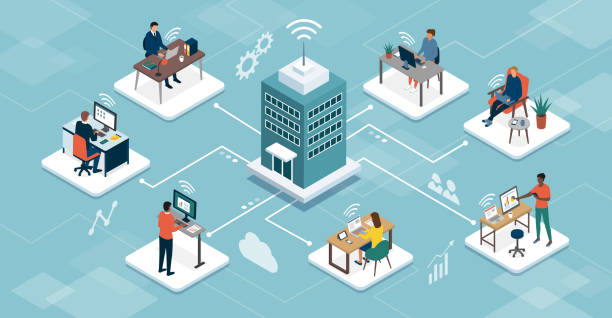Importance of Monitoring your Remotely Workers in 2022

Remote work and telecommuting have become the new normal, and we all welcome it with open arms. We stay home all day and focus on our work tasks. When you work from home, it’s up to supervisors, managers, and others to keep an eye on things. Regarding “supervising employees,” employers nod, but employees frown. A common misconception is that employees monitor because employers have trust issues. However, remote workers tracking and management software is often beneficial to the employees.
For companies, employee tracking streamlines processes and improves employee skills. For employees, on the other hand, it leads to distrust. This negative attitude can occur when employees do not realize the benefits of employee monitoring. Employees should be fully informed about these systems before the company implements monitoring. Employee monitoring is not only important for employers; it is also necessary for employees. Scroll down to learn more about the concerns.
Benefits of monitoring your remote workers
Frontline managers struggle to get the most out of their frontline teams. Unable to know what their employees are doing; managers have to assume they are working during the day. Fortunately, several software solutions allow managers to track field staff activities and time spent on business trips and client visits. Let’s look at some of the benefits of using this type of software
1. Balance workload and delegate tasks
First of all, you can balance the workload of your employees and assign tasks to the most appropriate people. For example, suppose you have a team of five people working on the same task.
- Of these, one person has ten tasks per week, three have 15 tasks per week, and one has 25 tasks per week.
- Understanding this workload balance can help move at least some of the work toward those who have a heavier load and can do it better, which can help them get the job done on time.
2. Prevent burnout and improve morale
The importance of morale should not be overlooked. Telecommuting productivity statistics show that employees who work from home are generally happier, less stressed, and more productive.
Happy remote workers are more productive, while stressed and overworked workers tend to quit. By tracking staff workloads, you can detect in advance when employees have unsustainable workloads and work with them to find a better balance. In particular, the best people on the team may take on more work than they can to exceed expectations.
3. Evaluate employee performance
Another benefit of tracking employees is the ability to measure their performance while they are working. This allows managers to ensure that the assign right employees to the suitable projects. For example, if an employee performs below average on a particular task, they may not be the right person for the job. This indication can lead the manager to provide targeted training to that person or assign a new person to the project.
4. Manage feedback
Monitoring software makes it easier for managers to provide feedback on how employees are doing their jobs. This is a valuable benefit, as many remote workers cite the lack of feedback from management as one of their top concerns. By taking into account the number of employees, managers can provide feedback based on specific actions taken by their remote counterparts, rather than talking about performance in general terms. In doing so, managers can provide training to the poor performers and praise the good performers.
5. Improves the Remote Workers Productivity
Employee productivity is critical to a company’s growth. Low employee productivity will have a negative impact regardless of the type of business, product, or service. Therefore, it is essential to monitor employee productivity. Nowadays, tracking and managing employees who work remotely is becoming increasingly important.
Remote workers tracking software allows you to track the productivity of each remote employee and the time spent working remotely. This includes task assignment, progress management, time and attendance management, application integration, reporting, etc.
- This way, there’s no need to complete manual paperwork to track employees remotely. Instead, you can track employee productivity in an automated and convenient way.
- By recording the time spent by remote workers on various tasks, you can determine how much time they are wasting and assigning them new tasks.
- Even with breaks, remote workers may be able to complete their tasks. In this case, it means they don’t have to worry about their productivity.
-
However, remote worker tracking systems use to maintain an agile and efficient workforce during tough times and pandemics and optimize business growth.
6. Identify sources of inefficiency
Workload tracking is also a great way to identify inefficient or unproductive processes in progress.
- For example, if an employee’s workload is consistently unbalanced, it may indicate an inefficient task allocation system.
- If you notice that one of your busiest employees has minor work, it may be a sign that time is not being used effectively.
7. Manage project deadlines effectively
Managers are likely to set deadlines for projects before assigning work. Tracking employees allows managers to monitor the number of time employees spend on projects and the types of activities they undertake, and whether they are meeting the proposed deadlines. Based on this data, managers can train employees to ensure efficiency or set new schedules. In both cases, monitoring can prevent project delays due to inefficiencies in the field.
- By monitoring staff behavior in remote locations, managers can understand which business processes are working well and which need to be optimized.
- This allows managers to provide appropriate feedback to their subordinates, both positive and negative.
- Overall, companies that use employee tracking can grow their business and increase employee engagement.
To Sum Up
Today’s businesses are getting bigger and bigger, employees are dispersing more and more in different geographical areas, and more and more data and processes are being stored and transmitted. As a result, the issue of tracking employees on-site is becoming increasingly important for companies in all industries. In recent years, remote working has become an integral part of modern working life, and many companies have adopted a remote working model. As a result, more and more employees are working full or part-time remotely.
- This benefits both employees and companies, as geographic proximity is no longer a requirement for employment.
- Employees can also choose their own work schedules, avoiding peak hours, enjoying flexible hours, and reducing travel time.
- Remote staff monitoring allows managers to monitor and manage staff performance without being in the office, making remote workers more efficient.
- This balances the workload of remote workers, avoids unnecessary interruptions, saves the company and individual employees travel costs, and reduces phone calls.
Author Bio
Sarah Noah Liam is a 28-year-old Software Management person who enjoys programming, Employee Monitoring System, and screen recording. She has a post-graduate degree in Computer science. She was raised in a happy family home with two loving parents.




